Create. Imagine. Discover. Smithsonian Open Access
What will you create?
The Smithsonian has launched Smithsonian Open Access, an initiative that removes copyright restrictions from about 2.8 million of our digital collection images as well as collections metadata spanning nearly two centuries of research. Open Access means that people everywhere can now download, transform and share this content for any purpose, for free, without further permission from the Smithsonian.
Many other museums and cultural institutions have released collections data through open access, but the Smithsonian’s is the largest and most interdisciplinary open access program to date. The Smithsonian will continue to add items on an ongoing basis, with more than 3 million images designated as open access by late 2020.
“Open access is a milestone for the Smithsonian in our efforts to reach, educate and inspire audiences,” said Smithsonian Secretary Lonnie G. Bunch III. “Through this initiative, we are empowering people across the globe to reimagine and repurpose our collections in creative new ways.”
Smithsonian Open Access content includes high-resolution 2D and 3D images of collection items, as well as research datasets and collections metadata, which users can download and access in bulk. All of the Smithsonian’s 19 museums, nine research centers, libraries, archives and the National Zoo contributed images or data to this launch. The program includes content across the arts, sciences, history, culture, technology and design–from portraits of historic American figures to 3D scans of dinosaur skeletons.
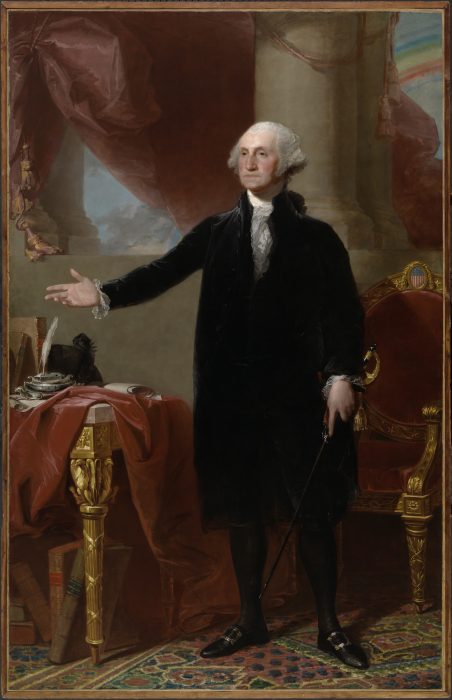
George Washington (Lansdowne Portrait) While mapping out the composition for this painting, American artist Gilbert Stuart, who had previously worked in England and Ireland, drew from European traditions of state portraiture to evoke Washington’s leadership. The artist made a number of direct references to the newly formed United States, and the pose he chose for the president is believed to allude to Washington’s annual address in front of Congress in December 1795. Stuart completed several replicas of the image, which spread rapidly through popular engravings. National Portrait Gallery, Smithsonian Institution; acquired as a gift to the nation through the generosity of the Donald W. Reynolds Foundation
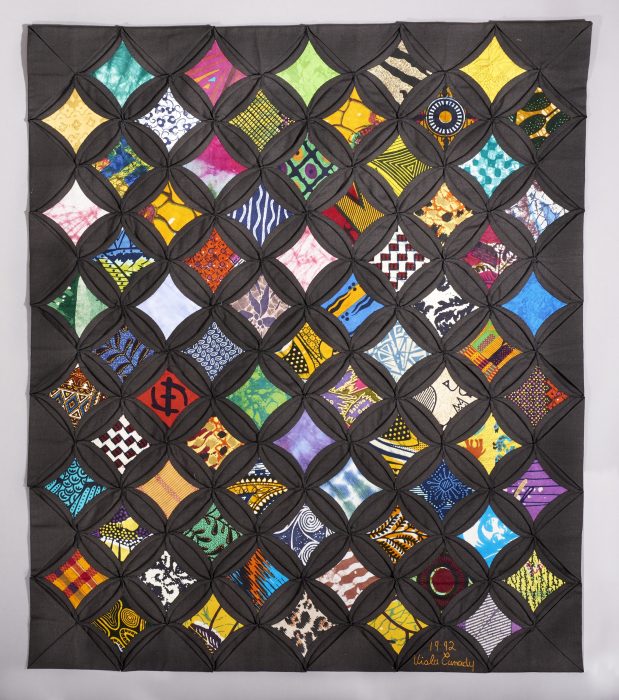
Cathedral quilt. Brightly colored fabrics are set within a matrix of black cloth, rendering vividly the effect of a stained glass window. Viola Canady, a gifted quilter, often applied her skill to spiritual themes and used quilting to build community. She founded the Washington, DC quilting guild Daughters of Dorcas and Sons, which taught and shared a love of quilting in local schools, hospitals and community centers. Creator: Violet Canady. From the collections of the Anacostia Community Museum
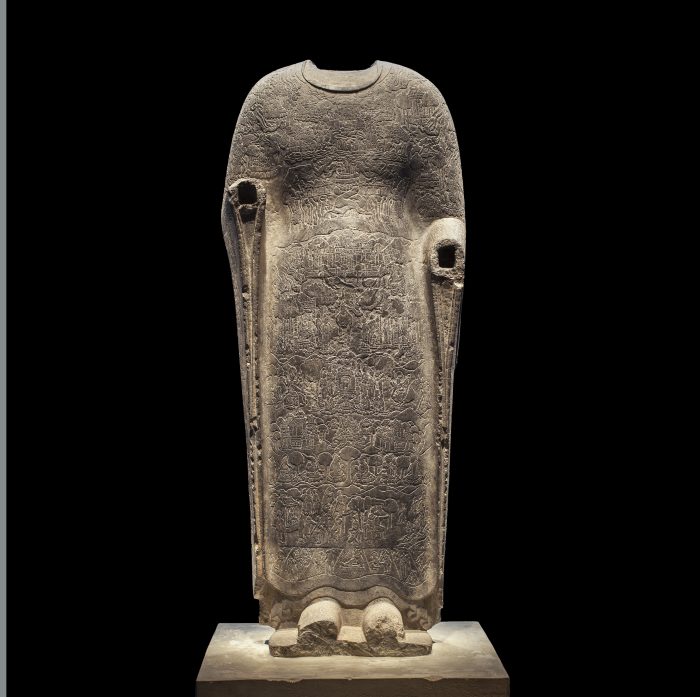
Buddha draped in robes portraying the Realms of Existence. From the collections of the Freer Gallery of Art, purchased from Taku Shanfang, Beijing by Carl Whiting Bishop on December 24, 1923
Previously, the Smithsonian made more than 4.7 million collection images available online for personal, non-commercial and educational use. With Smithsonian Open Access, nearly 3 million of those images carry a Creative Commons Zero designation, which waives the Institution’s copyright and permits a greater variety of uses, both commercial and non-commercial, without the need for Smithsonian permission or payment.
“Open access exemplifies the Smithsonian’s core mission: the ‘increase and diffusion’ of knowledge our institution has fostered for nearly 175 years,” said John Davis, interim director of the Cooper Hewitt, Smithsonian Design Museum, who led the initiative from its inception. “With Smithsonian Open Access, we’re inviting people everywhere to make that knowledge their own––to share and build on our digital collections for everything from creative works, to education and scholarly research, to bold innovations we have yet to imagine.”
The Smithsonian is joined in this launch by collaborators using the Institution’s open access collections to create original works and discover new insights:
- Artist Amy Karle used a 3D scan of a Triceratops skeleton from the National Museum of Natural History to create nine sculptures that explore the impact of technology on evolution.
- Google Arts & Culture applied machine learning to the entire Smithsonian collections dataset to uncover connections between early women scientists at the Smithsonian and their life’s work.
- Creators of the children’s book series “AstroNuts”––author Jon Scieszka and illustrator Steven Weinberg––produced a free, downloadable booklet showing K–12 students how to remix Smithsonian Open Access images for their own projects.
- Georgetown University Library’s Maker Hub challenged students to create projects––from textiles to electronics to artworks––based on the Smithsonian Open Access collections.
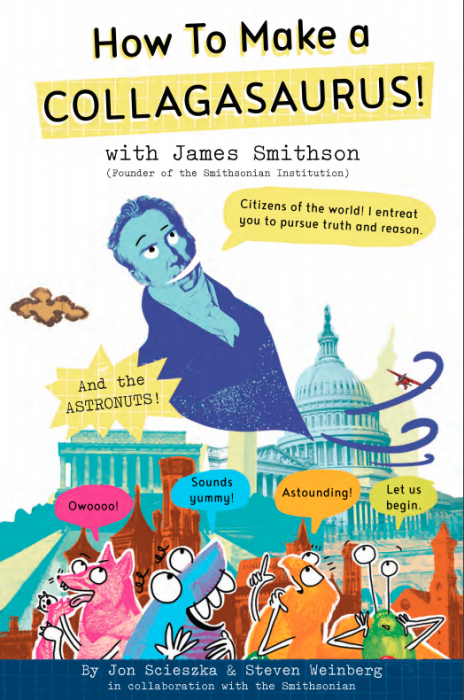
Cover of a book from the “Astronuts” series
“The Smithsonian launched open access with new platforms to give the public ready access to our trusted collections and data,” said Effie Kapsalis, the Smithsonian senior digital program officer, who managed and guided implementation of the program. “We are excited to see how people worldwide use this dataset, which represents nearly two centuries of interdisciplinary research, to understand and solve today’s challenges.”
Visit si.edu/OpenAccess to browse the Smithsonian Open Access collections and learn more.
What is included in the Smithsonian Open Access Initiative?
The Open Access Initiative applies to digital assets (also referred to as digital surrogates) that are created, stored, or maintained as collections by the Smithsonian, including text, images, sound recordings, research datasets, 3D models, and collections metadata. But not every digital asset will be designated for open access. Digital assets that are film, publications, or products are not currently eligible under SD 609.
How will the public know what is part of the Smithsonian Open Access Initiative?
 Open Access items will be marked with what’s called a Creative Commons Zero (CC0) designation and logo at the item-level in unit-managed Collections Information Systems, public websites, and third-party sites:
Open Access items will be marked with what’s called a Creative Commons Zero (CC0) designation and logo at the item-level in unit-managed Collections Information Systems, public websites, and third-party sites:
This means the Smithsonian dedicates the digital asset into the public domain, meaning it is free of copyright restrictions and the public can use it for any purpose, free of charge, without further permission from the Smithsonian.The Smithsonian is using CC0 to tell people that they do not need the Smithsonian’s permission to use the digital asset in any way. CC0 only applies to copyright so re-users may still need someone else’s permission to use a CC0-designated digital asset. For more information, see the Smithsonian Terms of Use.
Can anyone use Smithsonian digital assets designated as CC0 for commercial uses?
As far as the Smithsonian is concerned, yes. But commercial use of a digital asset might be affected by other restrictions, such as publicity rights, trademark law or even criminal law. For instance, it would be illegal to use a Smithsonian digital asset to commit forgery. For this reason, even though a user may not need the Smithsonian’s permission, the user may still need someone else’s permission to use the digital asset or the proposed use may be prohibited by law. This is made clear by the CC0 designation: https://creativecommons.org/publicdomain/zero/1.0/.
How can Smithsonian digital assets designated with CC0 be used?
It would not be possible to identify all the possible uses; however, we expect users to be creative yet considerate as seen in the cases of other cultural institutions that have adopted open access policies.
Examples of the possible uses of CC0 assets include:
- Innovators building apps and machine-learning demonstrations with open access assets
- K–12 robotics clubs and maker spaces developing school projects using open access assets
- Tech companies using open access assets to test new technology
- Artists and designers mixing Open Access assets in new artworks and designs
- Inclusion of Smithsonian digital images in Wikipedia and other open knowledge platforms
 Can anyone now use the Smithsonian logo or trademark?
Can anyone now use the Smithsonian logo or trademark?
No. The names “Smithsonian,” “Smithsonian Institution,” the Smithsonian sunburst logo, and/or the names and/or logos of specific Smithsonian museums, offices, and programs are not digital assets included in the Open Access Initiative.
Who can I contact if I have questions?
- About the Open Access Initiative – openaccess@si.edu
- Legal Questions – OGCOpenAccess@si.edu
- About a specific digital asset –
- Business Questions – RightsManager@si.edu
Posted: 25 February 2020
-
Categories:
Art and Design , Collaboration , Feature Stories , History and Culture , News & Announcements , Science and Nature


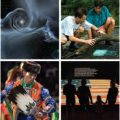





Thanks so much, Alex! Not super important, but we released a mere 2.8 million but plan to hit the 3 million mark in 2020.
Merely 2.8 million? What a bunch of slackers!